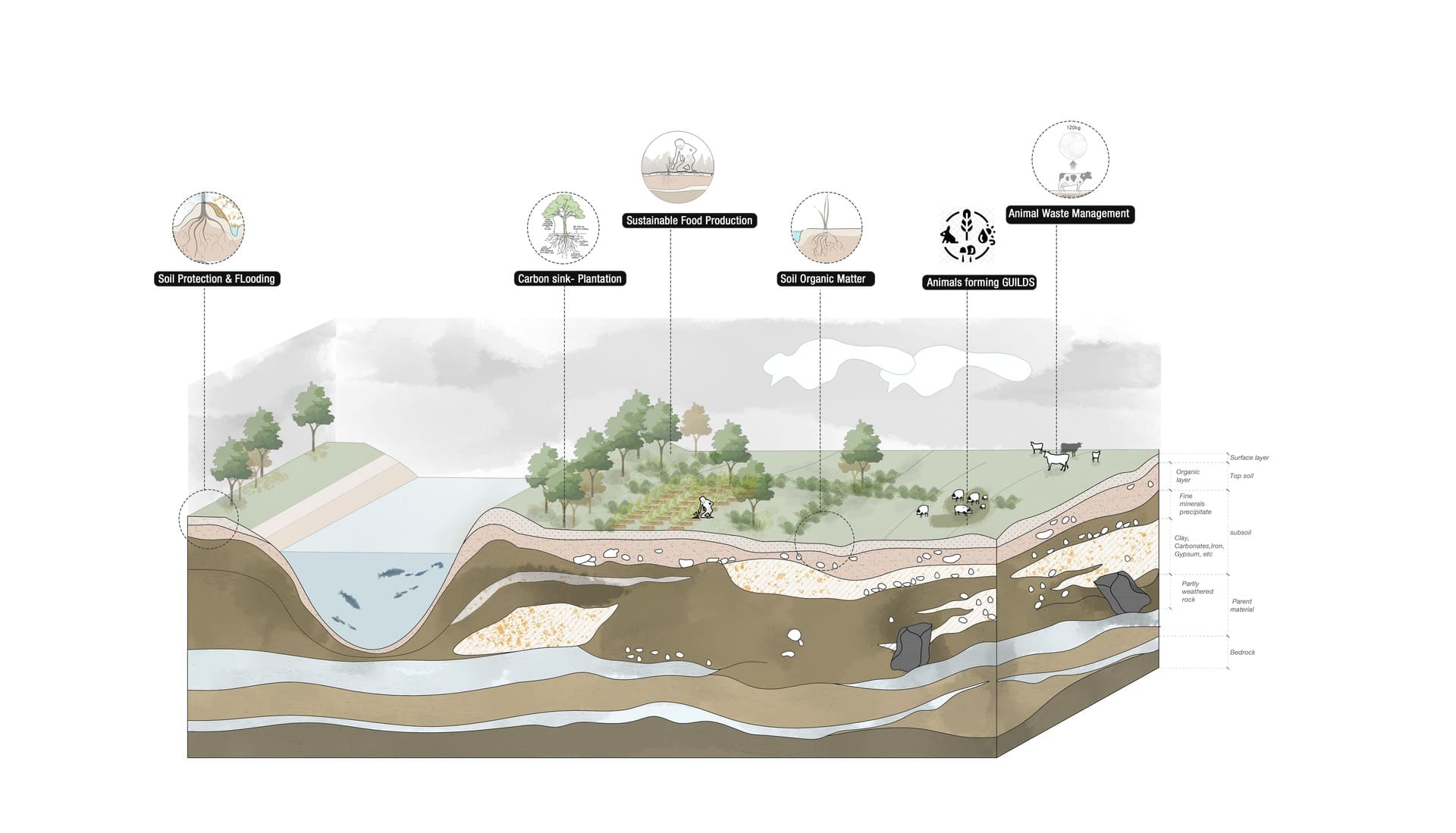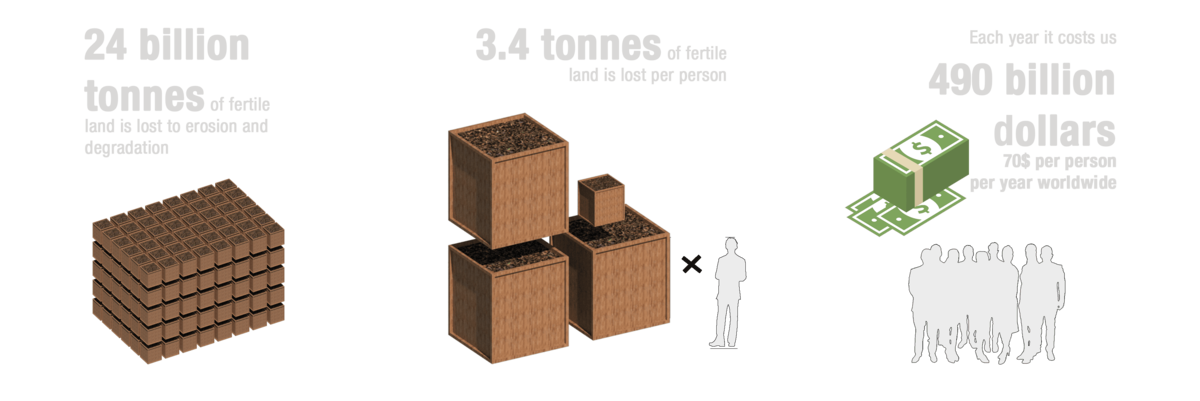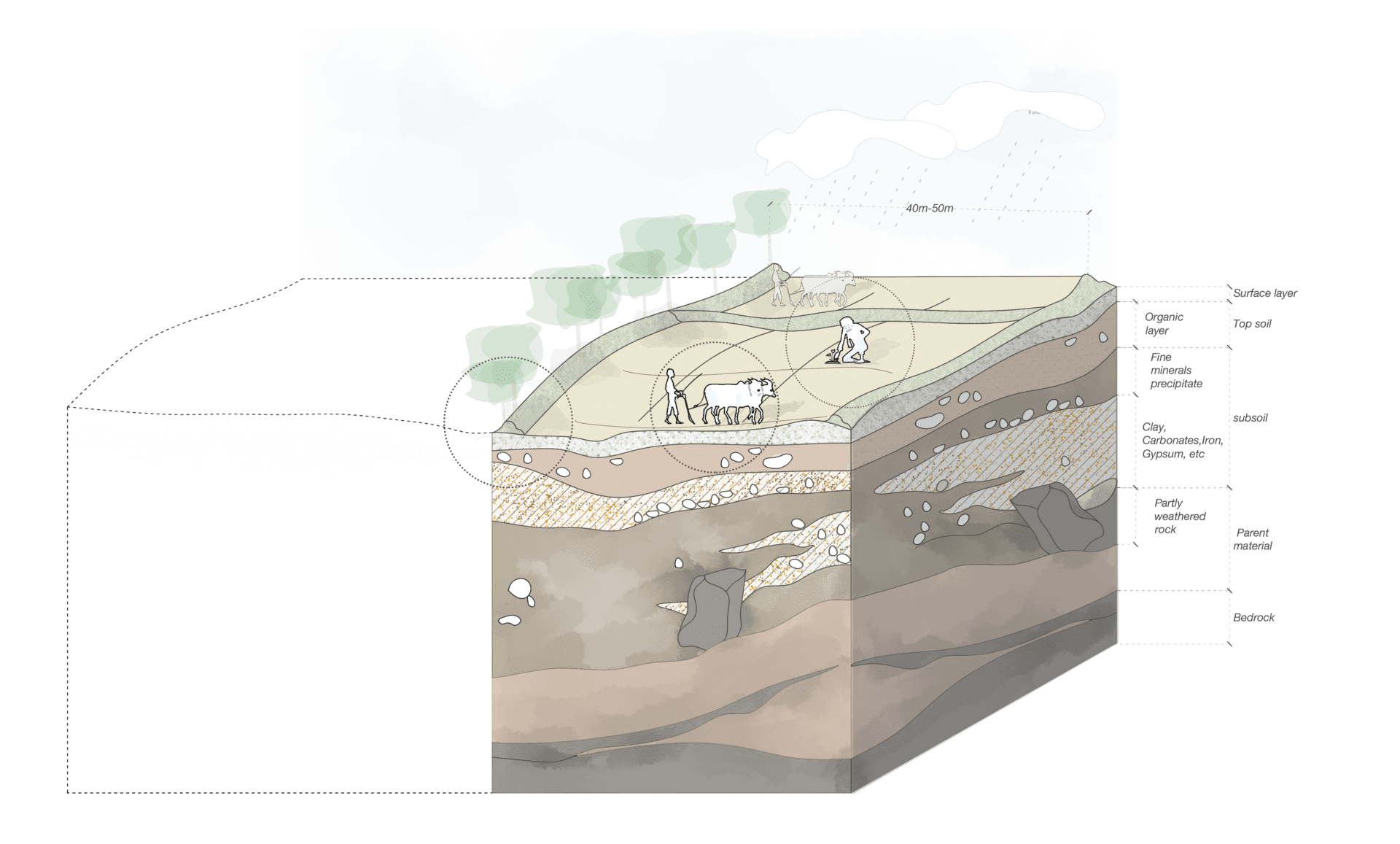Soil


30cm of top soil stores 60% of carbon released. Soil carbon sequestration is a process in which CO2 is removed from the atmosphere and stored in the soil carbon pool.This process is primarily mediated by plants through photosynthesis, with carbon stored in the form of SOC. We will try to distinguish the relationships that are present in the eco-system. We wouldmlke to explore the three dimensionality of fragile relationships that are imperative for the existance of the human life.

Soil
Organic matter is a key component of soil that affects its physical, chemical, and biological properties, contributing greatly to its proper functioning on which human societies depend. Benefits of soil organic matter (SOM) include improvement of soil quality through increased retention of water and nutrients, resulting in greater productivity of plants in natural environments and agricultural settings.
Soil Cover
Plants use carbon dioxide during photosynthesis, the process whereby the plant converts the energy from the sun into a chemical carbohydrate molecule. Plants use this carbon chemical to grow. As a “trap crop”, a cover crop will store nutrients from manure, mineralized organic nitrogen or underutilized fertilizer until the following years' crop can utilize them, reducing nutrient runoff and leaching
Atmosphere
A number of natural and man-made mechanisms can affect the global energy balance and force changes in Earth's climate. Greenhouse gases are one such mechanism. Greenhouse gases absorb and emit some of the outgoing energy radiated from Earth's surface, causing that heat to be retained in the lower atmosphere.
Source: bloghubspot.com




